|
|
| |
Bengal Cat Health Issues
My experience with health issues in felines includes obesity, thyroid, feline urological syndrome, scooting, spraying and inappropriate elimination. The best advice I can dispense with is be very observant and always mindful of any changes in behavior, appetite, matted coats, weight loss and in general the overall happiness of your feline. Cats have routines and when they vary from normal behaviour something is wrong. For example if you notice your cat sitting in an unusual space and not being sociable chances are they need medical attention. Another telltale sign is the coat. Healthy animals big or small have shiny, glossy coats. A shiny coat is a good indicator of a healthy animal. A dull or matted down coat sends an immediate warning that a problem exists.
Hereditary Bengal Health Issues
Bengal Cats possess some hereditary conditions which include; Cataracts, Progressive Retinal Atrophy, Entropion, Cardiomyopathy, Joint Problems, Polycystic Kidney Disease, Distal Neuropathy, Over-grooming, FIP, Diarrhea, Vomiting, Shedding, Hip Dysplasia, Bengal Polyneuropathy and sensitive stomach.
Cataracts may be treated with success but left untreated may cause blindness and glaucoma.
Progressive Retinal Atrophy is a disease of the rod and cone light receptors which may result in blindness.
Entropion is another eye disorder which requires immediate treatment as it is painful and your Bengal Cat's eyelid becomes inverted. If left untreated this condition can lead to blindness.
Cardiomyopathy is a disease of the heart muscle and can be life threatening.
Joint Problems which Bengal Cats may experience called (luxating patellas) is the kneecap going out of joint.
Polycystic Kidney Disease is a condition which causes cysts on the kidneys of Exotic Cats.
Distal Neuropathy is a neurological disorder affecting Bengal Cats which may lead to paralysis.
Over-grooming (Psychogenic alopecia) can be a stress related disorder wherein the Bengal Cat grooms so much they lick off fur. If you notice bare patches contact your vet for a proper diagnosis.
FIP - Feline Infectious Peritonitis
FIP is feline infectious peritonitis. It is generally fatal and caused by Feline Infectious Peritonitis Virus. The virus is a mutation of Feline Coronavirus (FCoV) and attacks the white blood cells. FIP can occur in all breeds of cats but last year a dear friend of mine lost her beautiful Bengal to this virus. Once diagnosed the cat died within a month and although she has a beautiful new cat named Tinker we will always remember Teddy fondly.
Diarrhea and Vomiting
Diarrhea and vomiting appear prevalent in the Bengal breed. After consulting with the vet and ruling out any disorder go back to the basics; diet. The vomiting and diarrhea is normally corrected with diet modification. Please purchase the best food possible for your Bengal. Although the price is expensive you will save in vet bills and eliminate loose stool, diarrhea and vomiting.
Indoor Plants and Cats
Vomiting may occur when your Bengal Cat is exposed to indoor plants. Lucy accepted indoor plants for five years but a month ago she began ripping the leaves off one plant. The result was vomiting. I removed the plant. Much to my surprise Lucy commenced attacking a different plant which was subsequently removed. In a week my Bengal Cat was eating leaves from every plant. I removed all plants to create a safe environment for my Bengal Cat.
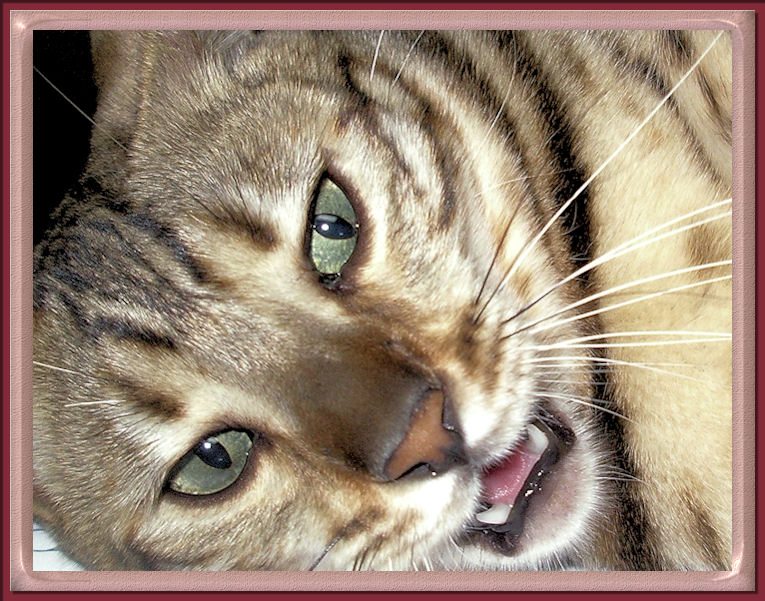
Dental Problems - Feline Oral Resorptive Lesion (FORL)
Dental problems relating to cats are a priority. If your cat does not have good dental health your cat does not have good overall health. That is a fact. The same is applicable to humans therefore regular dental checks are mandatory.
Lucy is six years old and upon her annual check the vet found two cavities. This is an oral abnormality termed Feline Oral Resorptive Lesion (FORL). Cats are normally older than four when the cavities occur. The cause of Feline Oral Resorptive is unknown. There is loss of enamel on the tooth and the resorptive erodes in the dentin causing pain for your cat. Sometimes there are symptoms including increased saliva, oral bleeding or difficulty eating. In Lucy's case she displayed no outward signs of pain therefore I was unaware of her condition.
There are four stages to FORL. Stage one signifies no eroded enamel and the treatment consists of a thorough cleaning.
Stage two indicates a lesion penetrating enamel and dentin and treatment includes fluoride ions which strengthen enamel and bind to the surface of the tooth.
Stage three of FORL requires extraction or a root canal because the resorption may extend into the root.
Stage four of FORL is tissue growing over the root resulting in a bleeding lesion which is usually painful. The treatment is extraction.
Here are the before and after pictures of my Bengal Cat with tartar on her teeth and then the tartar removed from her teeth.
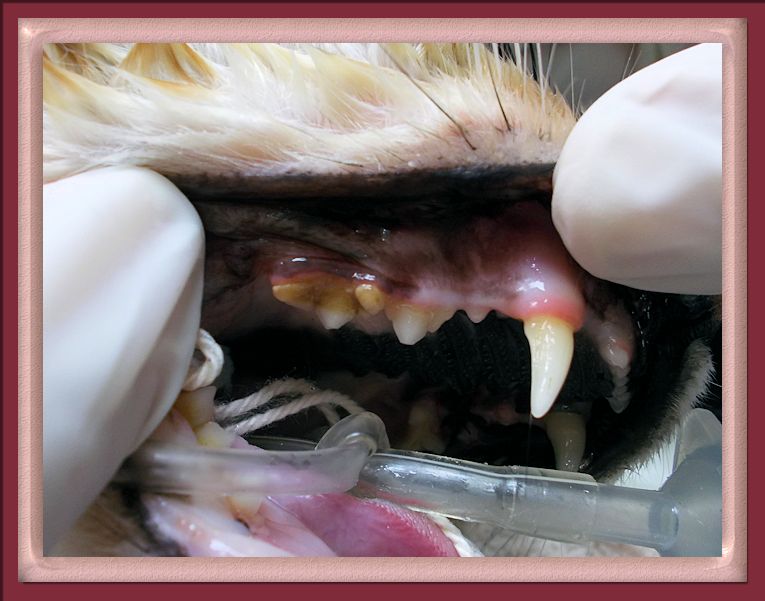
Lucy's teeth look pearly white and shiny after the cleaning and polishing.
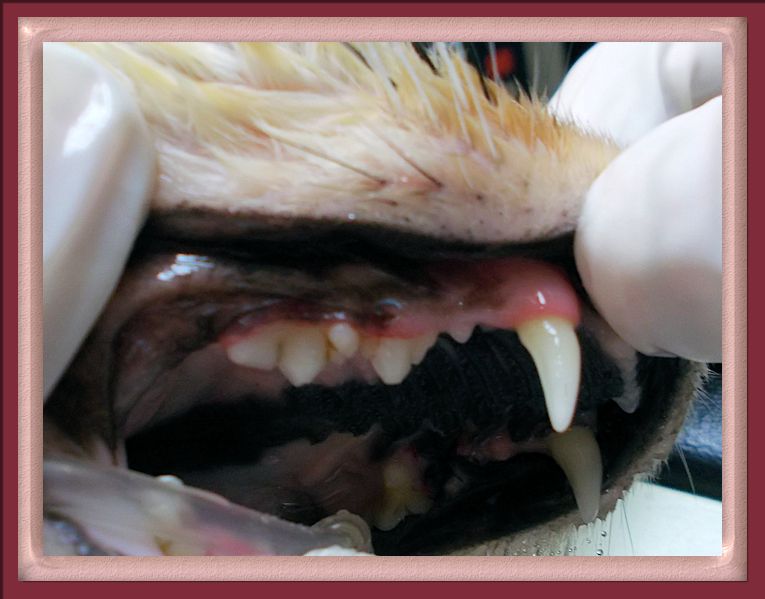
Did you know that most cats during the course of their lifetime lose on average two teeth?
Lucy completed her day surgery and I consented to x-rays prior to the extraction of the two teeth observed by the vet last week. Apparently there was a third tooth and yes it was extracted as well. Although the x-rays were an additional cost I believed the money was well spent because it would be rather cruel to go through the procedure again because the vet cannot diagnose properly without the x-ray.
Did you know that cats have 30 teeth? I was shocked because I knew they had molars and fangs and little teeth at the front but I was unaware they have 30 teeth. Some are very tiny actually miniature as I was looking at the mock-up of a feline mouth.
Bengal Cats - Degenerative Discs and Bengal Polyneuropathy
Let me share an incident which occurred on March the 1st, 2013. I heard Lucy being extremely vocal in the hall but the sound was similar to crying. I bolted to the hall and when I approached Lucy she began walking backwards. I didn't think that was a good sign although I know that she can moonwalk as well as Michael Jackson. After she walked backwards she started turning in a circle and then backwards again. Lucy commenced to walk up the stairs. She placed her front paw on the stair and her back legs gave out and she slid down to the tile floor. I was about to carefully pick her up but she tried a second and on the third attempt she managed to get up the stairs. I was screaming for my husband John Law and said something is wrong with Lucy so he came running.
She was on the main floor of the house but she was not walking properly. I know she was in her bedroom sleeping, I did not hear her fall and I could not understand the inability to walk well as her hind quarters appeared to be severely injured. I called the emergency vet clinic because Lucy was in the spare bedroom lying on the bed like a horse. Her eyes did not appear responsive and she looked in pain and was just lying on her side. The clinic said that I should keep a close eye on her and if the condition does not improve within the hour I should bring her in. I also read about a condition called Bengal Polyneuropathy and the emergency clinic said when the balance is off in a cat quite often the problem is neurological. I was upset because it was freezing cold outside, the trip would be about an hour and I didn't want to add additional stress to her already fragile condition.
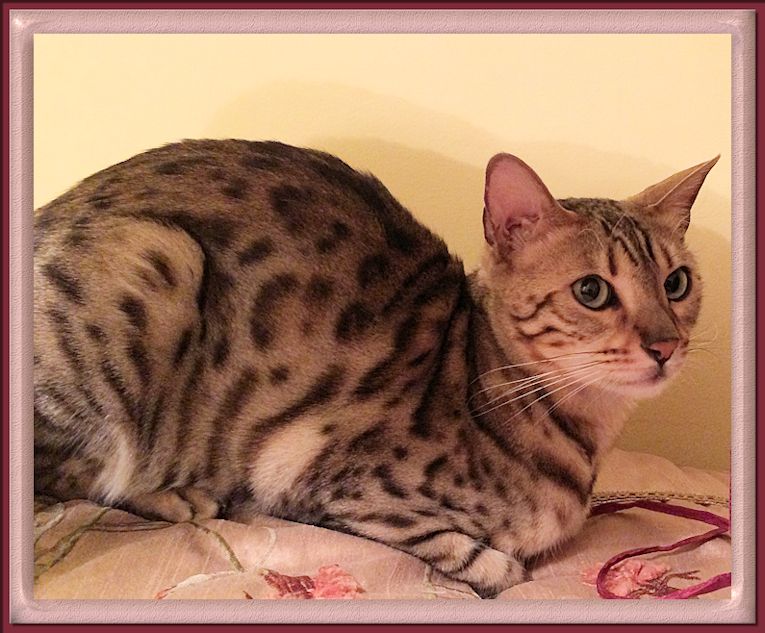
Luckily she became more responsive and even walked to the kitchen to get food. We stayed up and kept an eye on her until three and due to the fact she could walk although not well she was eating and moving so first thing in the morning I called our vet. They are only open for a few hours on Saturday but they told me I could bring her in. The vet examined Lucy and took x-rays. She showed us the x-rays and her discs are degenerative. She suggested that Lucy needed to see a specialist as discectomy surgery is very successful in cats. She gave us pain medication and called a neurologist as the problem was balance and honestly I was worried sick after hearing about her back and the possibility of surgery.
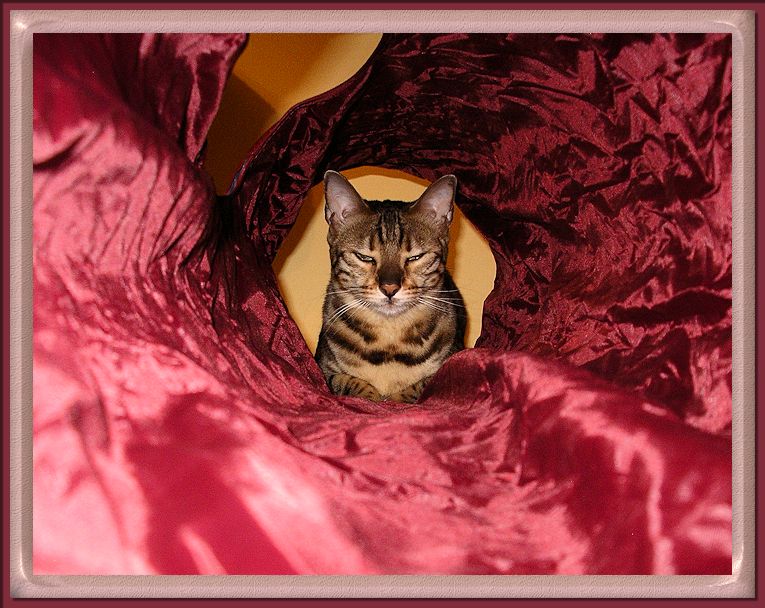
We had an appointment for the following Thursday to see a neurologist. Lucy was doing better as each day progressed however she was not running, jumping and I had the feeling she knew something was wrong. She did not seem to be in pain and her walking was markedly improved. We did not know if the pain medication was the reason for the improvement but we knew we would get answers from the specialist.
There was an intern and she took Lucy's particulars and then advised she would take Lucy to the back where they have a dedicated area for walking and examining pets. She did not pick Lucy up rather kept a good distance while she carried the cage to the back. We waited for about half an hour and then we were called into a room. The neurologist came in and introduced himself and the first words out of his mouth were, I saw the Bengal in the cage and thought well here we go again their always a challenging breed. Normally they are aggressive and it is extremely hard to examine them but I have to tell you something. Lucy is as beautiful on the inside as she is on the outside. I have never ever dealt with a Bengal Cat that was so gentle, good spirited and actually allowed me to poke and probe with no fuss and no bad temper, it was a first for me. That made me feel good and he immediately said that he believed she was fine and I could rid my mind of the thought of Bengal Polyneuropathy because Lucy does not have the condition.
He went on to say that her x-ray was astounding in that her discs have degenerated so greatly at such a young age. He said he could x-ray 100 cats and none would have this condition. He said it is related to the breed and the only concern he had was a rupture or herniated disc because in these cases he operates immediately as the outcome can lead to paralysis if not detected and treated early. We agreed to a Cat-Scan and he said he would try sedation as opposed to putting her out because it would be easier on her and he believed Lucy would be fine and they could perform the scan under sedation.
We waited and he called us in after the scan and told us that she was great with sedation only and he could find no issues that were pressing. He further stated that the condition may never worsen and the area that was tender related to the hind quarter not the actual disc area. He said that the fluid is gone around the last three discs and around two more in the rib area. He said she may have fallen earlier in the day and we told him we were out but saw her at noon and then were out again until dinner. She was sleeping but we also thought falling was a possibility. I don't know what happened but as long as we keep a close eye on her mobility and her gait then her health should remain good and the moment we see any problem walking of course we will contact him immediately.
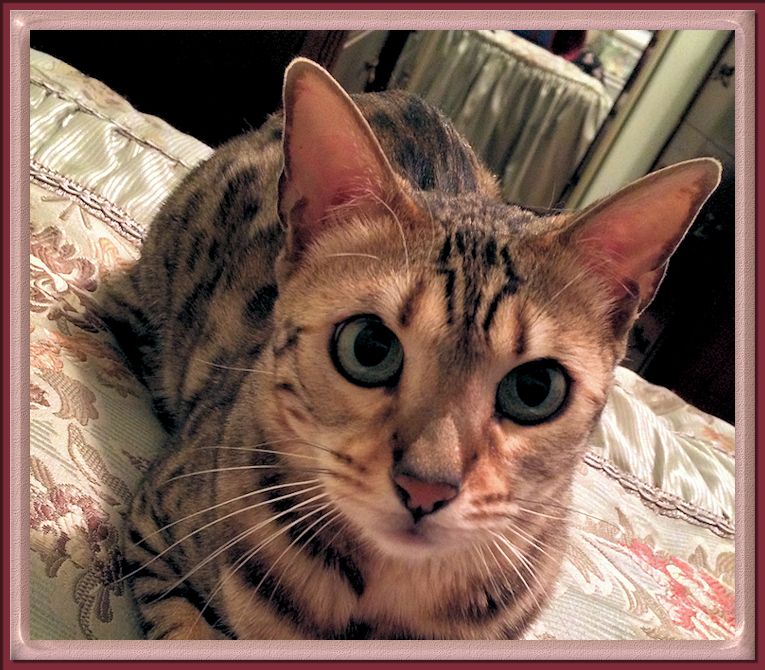
He also had the orthopaedic surgeon examine Lucy because Bengals are known to have loose kneecaps. The surgeon said her knees are perfect, her ligaments and joints good and once again what a pleasure it was examining such a beautiful Bengal Cat without being attacked, hehe. Oh that sounds awful but I guess these guys see a lot of Bengals. By the way the intern who appeared a little nervous of Lucy was now carrying her around the clinic. That was funny and of course Lucy loved the attention and behaved like a little queen.
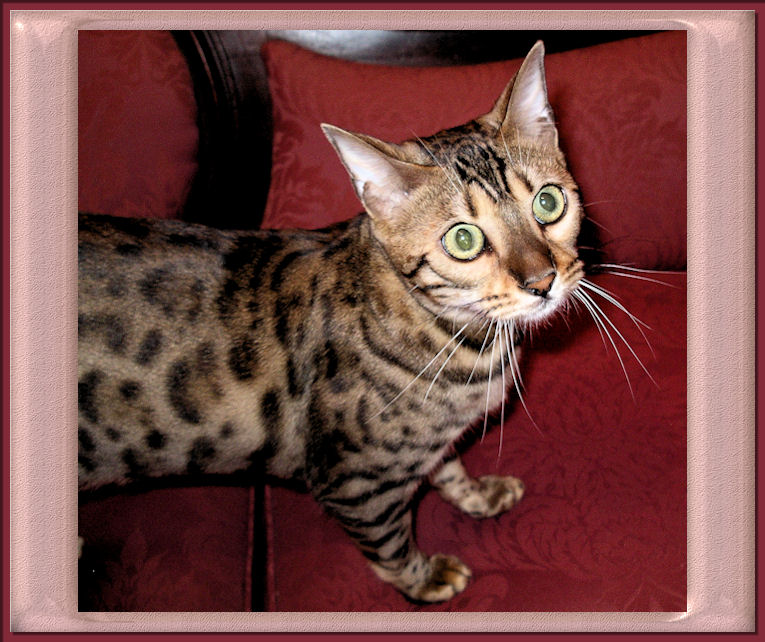
We took her off the pain medication immediately and kept a close eye on her but luckily as each day progressed she was improving. You see I know how she walks, her gait is very straight and her feet pounce into the floor as opposed to walking on the floor. She moves like a large animal with muscles showing and her normal walking mode is perfectly straight and she does not move sideways or favour any part of her body. I marvelled at that when we first brought her home because I had never seen a little cat prance. It took a few weeks before she was walking perfectly but she seems to be doing well and is full of zip and energy. Of course it was expensive but at least she saw great specialists and we know that at the present time she is not in need of surgery which is a blessing.
|
|
|
|
|
